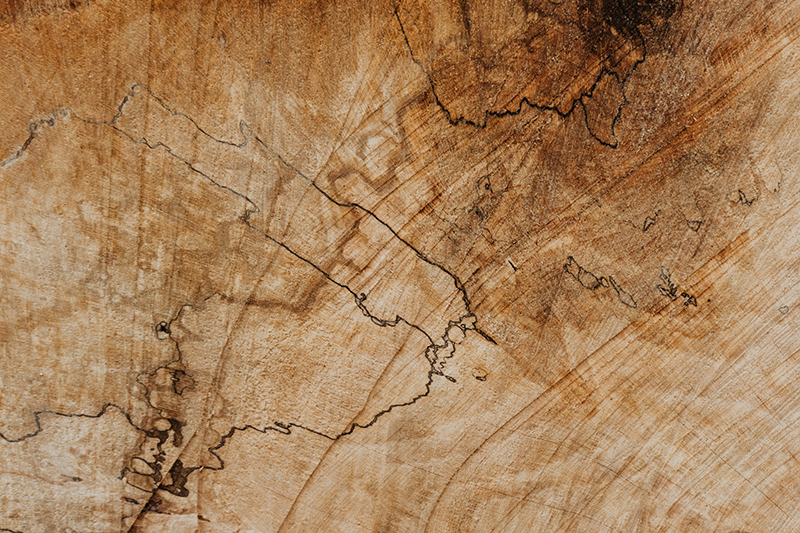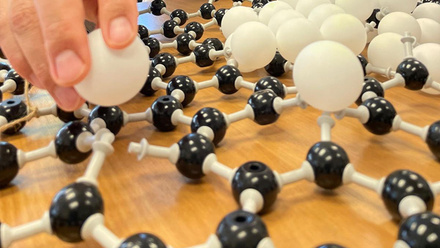A patent for transparent wood
Dr Michael Ford MIMMM at Haseltine Lake Kempner explores a patent for transparent wood.

Wood has been used in construction for thousands of years. Some of the advantages of wood, as compared to alternative structural materials, include a high strength-to-weight ratio, wide availability, renewability and a relative ease of working.
The beneficial mechanical properties of wood stem from its unique microstructure. Wood cell walls are effectively composite materials comprising oriented microfibrils of the polysaccharide cellulose impregnated with complex, cross-linked polymers known as lignin. Cellulose provides the wood with high tensile strength, while lignin confers structural rigidity and hydrophobicity.
Wood also has a chemical composition and hierarchical structure that lends itself to functionalisation and modification of the cell and cell wall to generate new macroscale properties.
One particularly desirable property is transparency, and this is discussed in European patent EP3600806B1, entitled Transparent wood and a method for its preparation, granted in June 2023 to Cellutech AB (now part of Stora Enso Oyj).
Of course, wood is naturally opaque. Incident light is scattered by the many internal interfaces in the microstructure and is also absorbed by lignin, tannins and other resinous compounds. Transparent wood, however, could find applications in solar energy harvesting, windows, light diffusers and display screens, which could be integrated seamlessly into timber-structured buildings.
According to EP3600806B1, transparent wood has previously been prepared by a process of delignification, followed by impregnation with a polymer that matches the refractive index of the wood substrate. However, the processes used were time-consuming and not necessarily environmentally friendly. For instance, lignin removal required treatment with a sodium hypochlorite solution for one to two days, or cooking in a sodium hydroxide and sodium sulphate solution.
In contrast, the patent describes a method for increasing optical transmittance without the need for delignification.
In particular, protection is claimed for a manufacturing method in which a wood substrate is exposed to a bleaching liquor, which comprises an agent selected from a peroxide system to inactivate chromophores in the wood.
The bleaching process is carried out until the substrate has a brightness (measured according to ISO2470-1, 2009) of at least 70%, and the bleached wood substrate retains at least 15% lignin (measured as Klason lignin).
The bleached substrate is then impregnated with a solution comprising pre-polymers and/or mono-polymers, which are subsequently polymerised to obtain transparent wood with an optical transmittance of at least 60%, at a wavelength in the electromagnetic spectrum from 400-1,000nm. The patent also claims protection for transparent wood with the optical transmittance and lignin content that result from this process.
According to the inventors, the bleaching agent used oxidises chromophores in the lignin, removing colour from the wood. This produces a bleached material in which the main structure is preserved, maintaining most of the strength.
A wood structure with a preserved lignin network is also more easily impregnated with aromatic polymers such as polystyrene. The inventors have also found that the bleaching process is significantly faster than delignification, and the number and quantity of chemicals used is reduced.
Examples of suitable peroxide-based bleaching liquors given in the patent include hydrogen peroxide, sodium percarbonate, sodium perborate, peracetic acid and sodium peroxide. The bleaching process can be enhanced by maintaining alkaline conditions and also by removing metal ions from the wood substrate prior to bleaching (for example, by treatment with diethylenetriamine pentaacetic acid (DTPA)). The formation of toxic effluents such as chlorinated dioxins can also be avoided by use of a chlorine-free bleaching agent.
Impregnation with a polymer following bleaching allows pores in the substrate to be filled, increasing mechanical stability and further improving the transparency. Ideally, polymers are used that match the refractive index (typically from 1.4-1.6) of the main components of bleached wood.
This helps to reduce haze in the final product.
The patent describes use of various possible polymer precursors, including methacrylates, styrene, isoprene, acrylates and acetates. Methyl methacrylate and styrene are particularly preferred.
The patent also describes application of the claimed bleaching process to various wood substrates – including angiosperms such as balsa, birch, ash and oak, and gymnosperms such as conifers, cycads and ginkgo. Some of these woods, such as pine and ash, usually become very fragile when made transparent by delignification.
The inventors suggest that transparent wood made by the patented method could be used as a construction material in light transmitting buildings, enabling reductions in energy consumption by partially replacing artificial light with natural light.







